When we talk about sustainability, climate change is the issue that gets the most air time. In all fairness, rightly so, because of its huge waterfall effect on other problems down the line – food insecurity, rising sea levels, drought, human health, and so on.
But on the same side of the coin is the topic of ‘biodiversity’. It involves so many moving parts, that few people can actually talk about the biodiversity crisis. Partly because it’s subject to that, “If I don’t see it, it doesn’t affect me” mentality – dangerous when multiplied by billions of individuals.
So, considering its importance and deep interconnectedness with climate change, we’ve decided to shed some light on the subject.
To start, what is biodiversity and why is it important?
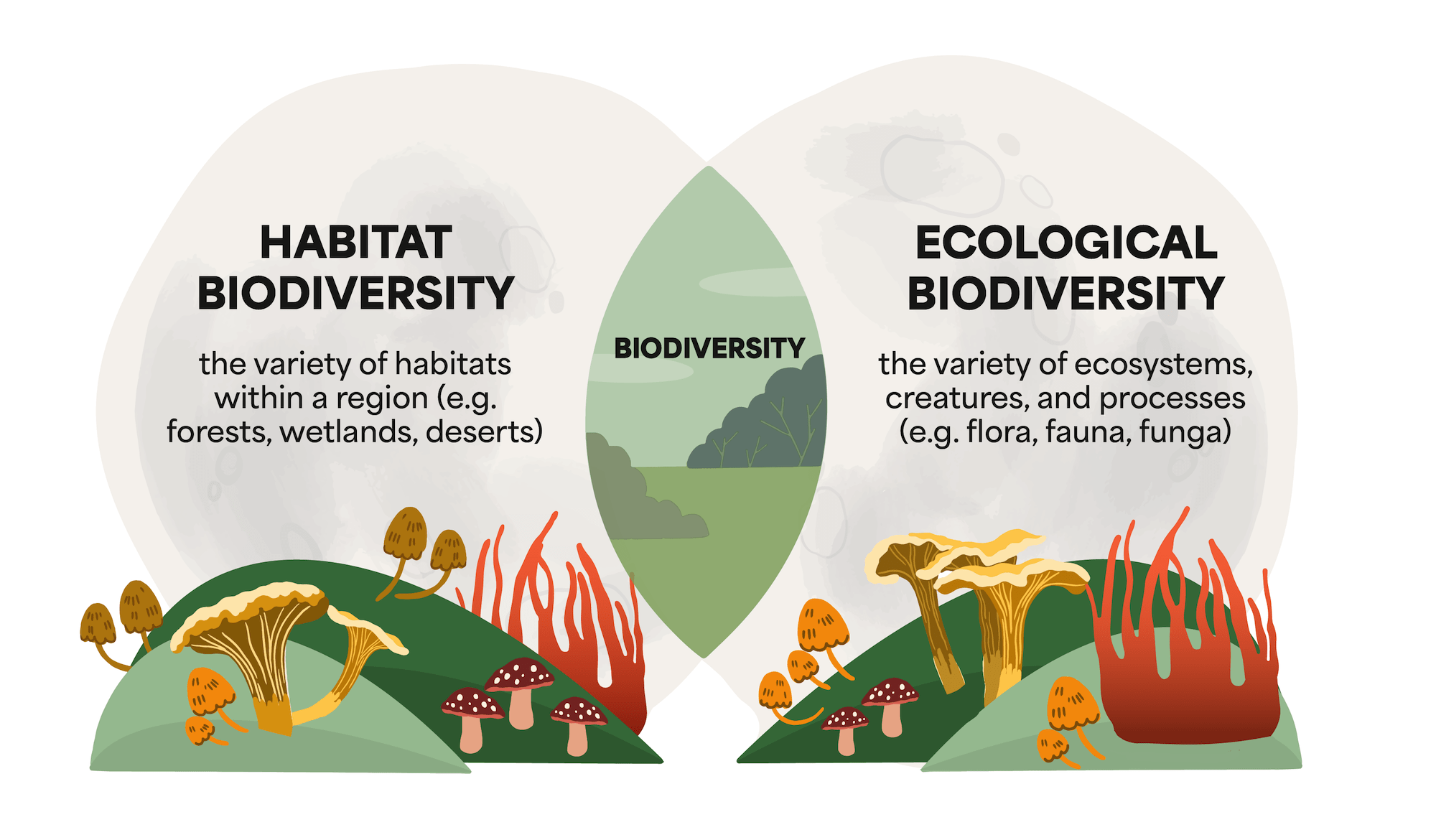
Essentially, biodiversity refers to all living things within a system, whether we’re looking at the whole planet or focusing on a specific area (ex: Guatemala, the Great Barrier Reef). It includes plants, animals, microorganisms (like bacteria), and people. All the elements work, ideally, in harmony with one another. Biodiversity gives us everything in nature that we need to live and breathe: medicine, shelter, food, and clean water. Functioning and well-balanced ecosystems provide us with these essentials we take for granted.
Grass is food for cattle, which in turn produce the manure that returns nutrients to the soil, making way for more healthy grass. Plant-pollinators, like bees and butterflies, are responsible for one out of every three bites of food. They perform a service that allows us to have so many options of fruits and vegetables on the table. Mangroves are impressive carbon sinks that absorb 10 times more carbon than forests.
Not all countries and regions are equal. Some have a richer biodiversity than others. Places with warmer and wetter climates, like the tropics, are more ideal for plant growth and general survival. As of today, there are 36 official biodiversity hotspots, ranging from the Caribbean Islands to the Philippines. They represent 2.5% of the Earth’s most important land surface, hosting more than half of the world’s endemic species (those that can’t be found anywhere else). These hotspots are also home to vulnerable communities that rely heavily on nature.
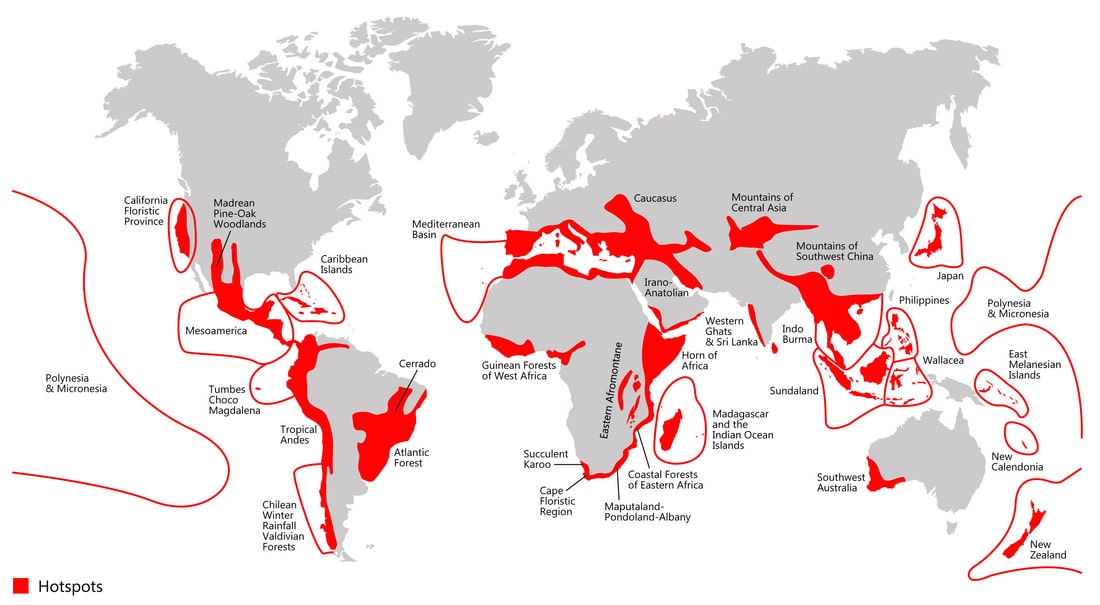
Biodiversity is in crisis, and it’s our fault
Skyrocketing human activity and the over misuse of resources have led to major biodiversity losses now spanning several decades. It is these very 36 hotspots that are in a conservation crisis.
Since the 1970s, scientists report annual declines of more than 50% of global populations of many animal species: mammals, fish, birds, reptiles, and amphibians. The latest IUCN Red List states that more than 42,100 species are facing extinction. The UN states that up to 1 million plant and animal species are on the brink of extinction. And the top cause is habitat loss. Other factors are direct exploitation (ex: overfishing), pollution, climate change, and invasive species.
When a country’s level of economic growth rises, so does infrastructure development and urbanisation. Rainforests, swamps, and lakes are destroyed to make way for buildings, farms, roads, etc.
The Chinese Paddlefish was one of the world’s largest fish and estimated to be 200 million years old. It had been swimming around since the age of dinosaurs, and survived all the changes and events that took place afterwards. In modern-day China, its home was the Yangtze River. In 2022, the Chinese Paddlefish was officially declared extinct, due to overfishing and dam construction.
When we zoom in on the palm oil industry, Indonesia and Malaysia account for 83% of global production. As it turns out, orangutans are also native to these two countries. The introduction of plantations necessitates the clearing of hectares of land. So, orangutans are pushed out of their homes and into isolation, while also losing sources of food and shelter. On top of that, they’re also targets of human conflict. Orangutans are currently classified as ‘critically endangered’.
Understanding the connection between biodiversity and climate change
Climate change is one of the drivers of biodiversity loss. It alters the behaviours and characteristics of natural ecosystems. Animal and plant species move closer to extinction, disease spreads faster. At the same time, biodiversity loss accelerates climate change, because the planet is less able to absorb CO2.
It goes without saying, biodiversity is crucial in the fight against climate change. Both are closely linked, and are the results of the unsustainable use of Earth’s resources. And ultimately, they need to be tackled together.
ShowYourStripes
In 2018, the now-popular climate stripes was created by Professor Ed Hawkins. It’s a visual representation to communicate and track change over time. Each stripe represents a year; blues for cooler-than- and reds for hotter-than-average years.
In 2022, Professor Miles Richardson applied the graphic to biodiversity loss. Green stands for the highest level of biodiversity, and yellow to grey shows levels of decline.

What can be done for biodiversity?
It’s easy to be overwhelmed by all the negativity. However, it’s worth remembering that humanity holds the power to make this disheartening narrative a more positive one.
In terms of international coordination, at the UN Biodiversity Conference COP 15, governments pledged to 30×30: a goal to protect and restore 30% or more of the Earth’s water and land by 2030. Then, at a revisionary meeting of COP16 in February 2025, a yearly fund of $200 billion to protect biodiversity by 2030 was agreed.
On the surface, both agreements are promising but long-term environmental pledges have been shaky of late – so we hope that both of these promises are kept.
Thanks to the conservation efforts of the bold and dedicated, there are also stories worth celebrating.
In 1982, only 22 California Condors remained. At least 1000 chicks have hatched following the implementation of the Recovery Program in the 90s – a hint of hope for a critically-endangered species. The Eurasian Beaver was nearly hunted to extinction centuries ago. 400 years later, they are being reintroduced to London, as part of a greater urban rewilding initiative in the UK.
Even businesses that aren’t directly involved with wildlife are joining the conversation. Lacoste and IUCN SOS had a three-year collaboration to raise awareness and funds for conservation programs. They created 10 limited edition shirts, where 10 of the world’s most critically-endangered species replaced Lacoste’s iconic crocodile logo. Not only that, but the brand went 100% crocodile-free on the International Day of Biological Diversity 2019. Instead, the spotlight was on the threatened species in all their shops and communication channels.
Although Lacoste is hardly a brand at the vanguard of sustainability, clever campaigns like this help to bring the importance of biodiversity into the collective consciousness. We expect to see more impactful initiatives over the coming years now that biodiversity is a bigger slice of the cake.
Biodiversity infographic
Here’s a little bit more about biodiversity – in infographic form – including a few everyday ideas on how we can help. Reader, you can do your tiny bit to help too!
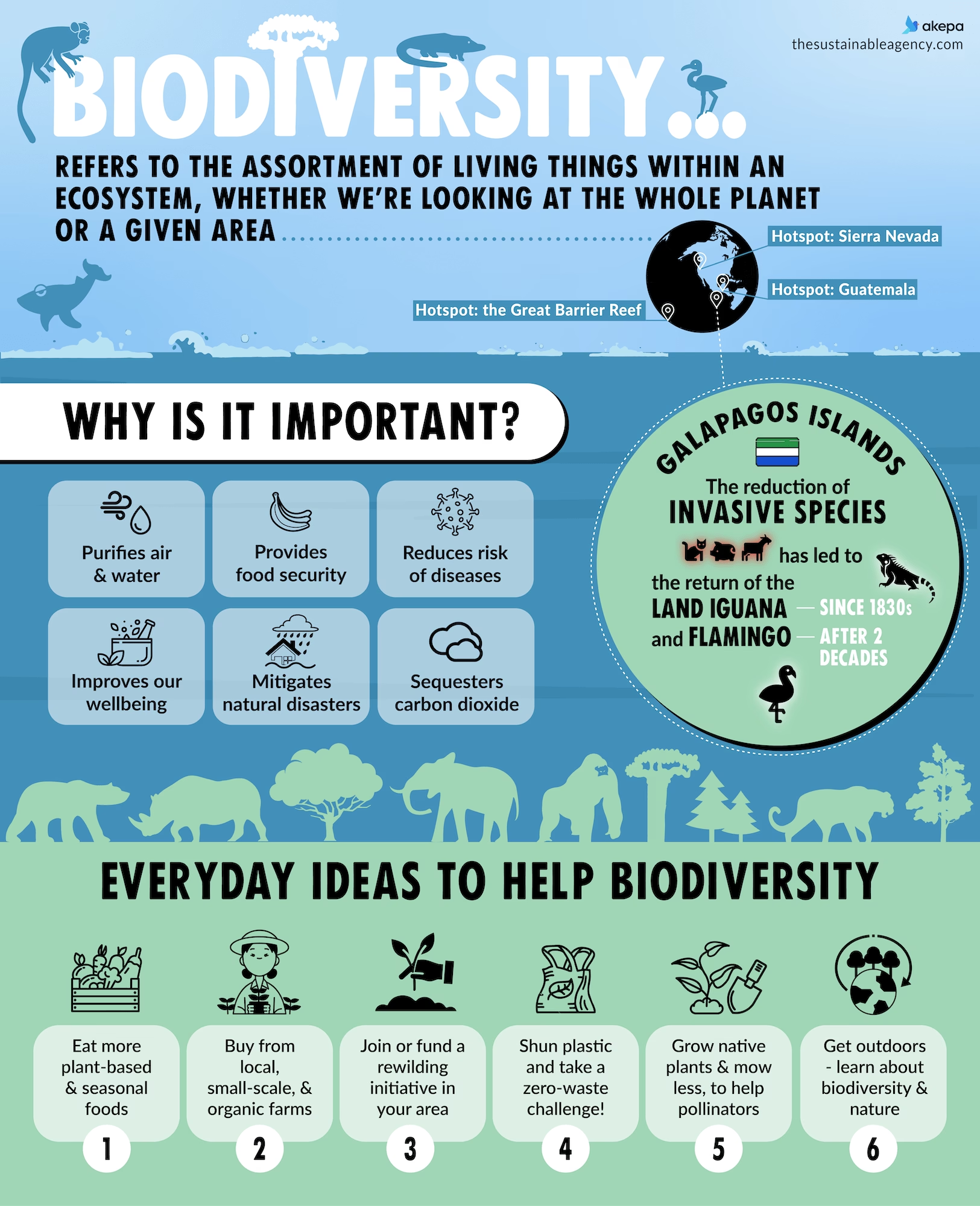
A final thought
People may have caused the biodiversity crisis, the climate change crisis, and a lot of other problems. But, we’re also extremely capable of reversing these crises. The cases above were just a few examples of what can be achieved, even in the most dire of situations.
It’s a matter of investing in the right partnerships and projects, and looking at biodiversity and climate change through a single lens, so that we all win.
If you’re a business trying to do some good for the planet, let’s work together. Leave us a note, so we can help you push your message forward.
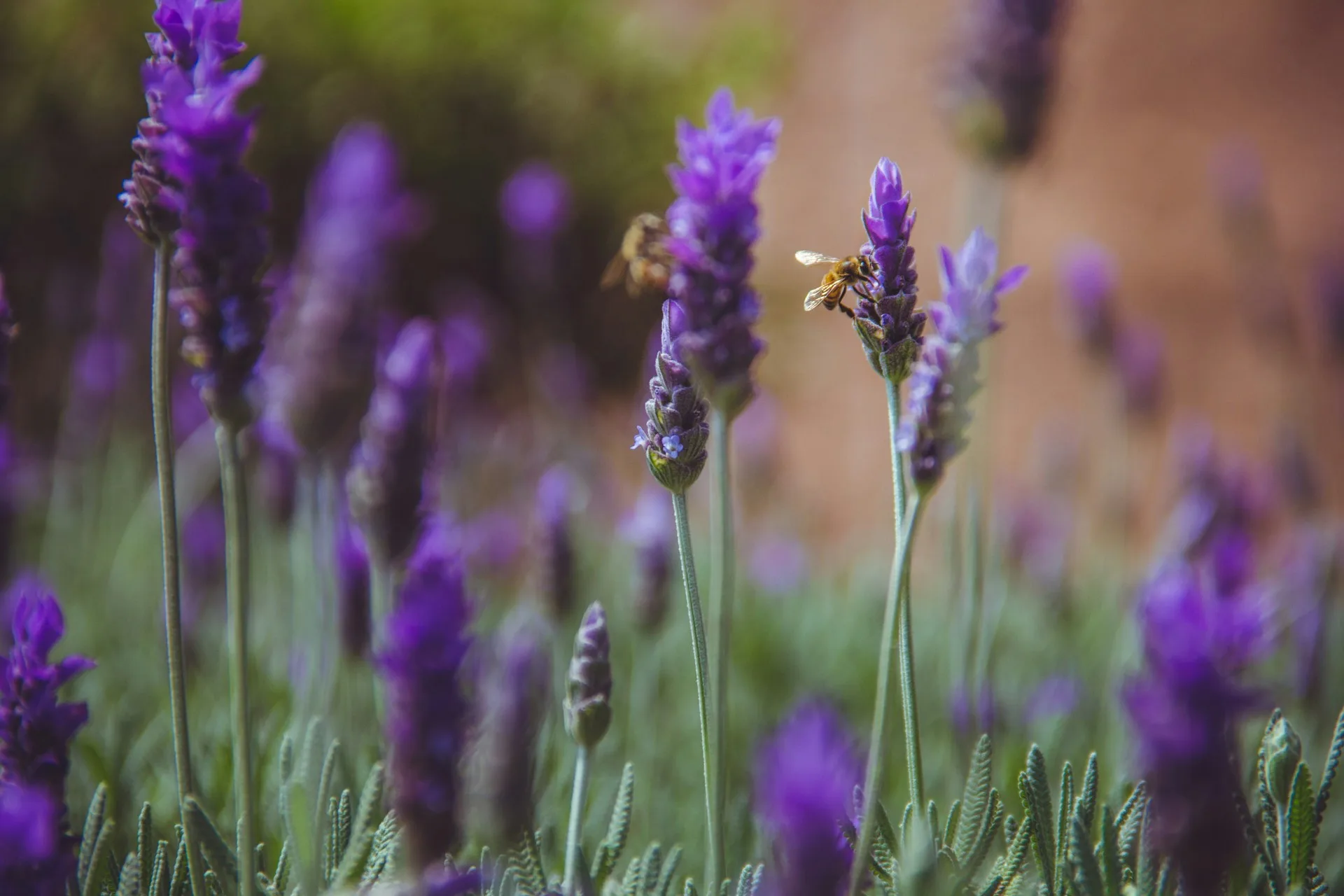
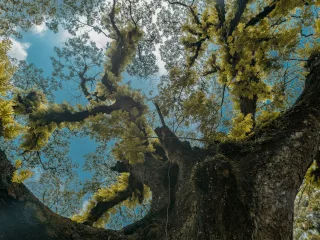
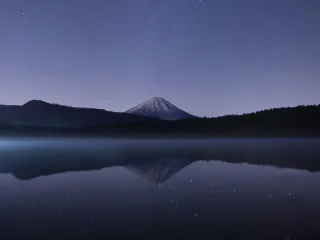
Leave a Reply